Joy Grannis grew up playing in the woods around her family’s Downeast Maine homestead. Although she has always loved art and creating, it wasn’t until middle school that Joy realized art could be “something special.” Now a professional illustrator, she combines her interest in the environment with her creative side. And she still loves spending time outside – hiking, paddling, mountain biking – often with her dog June by her side.
I grew up in Washington County, in a small town called Pembroke. It’s a coastal area, very rural, very pretty, not a lot of people. We lived on 100 acres of forest, so my siblings and I had a whole wild world at our fingertips. There’s a lot of really beautiful natural areas to visit there, tons of beautiful beaches and forests. We’d camp at Cobscook Bay State Park, right on the water. There’s also Shackford Head, the Cutler Coast (part of the Bold Coast Trail), and we would spend a lot of time playing on our land. We’d build forts and pick wildflowers and help with the garden.
Art was sort of always there and was definitely encouraged in our home. There were always supplies of all different kinds and a lot of creating. We were all homeschooled, and my siblings are all pretty creative as well. I remember one year we got a large set of Crayola crayons, with the little sharpener on the back of the box, and I was very excited about that. But I didn’t really think much about art as an identity thing; it was just something that we did.
When I went to middle school, I found other kids were really interested in my art and would ask me to draw things for them or help them draw stuff. There was a competition to design a poster for the Cobscook Bay Research Institute, trying to raise awareness about rockweed, because it was being over harvested. I collaborated with one of my classmates, and we made this cool poster with seaweed and crabs. We won and split the 50 bucks between the two of us. It was really cool coming out of the home environment and into public school and seeing how art affected other kids. It made me feel like my art was something special.
When I went to University of Southern Maine in Portland, I enrolled as a liberal arts major and took a ton of classes. I got really into book arts and took all the studio art classes. I had in my head that the only job you could get as an artist was graphic design and designing logos. At the time, that didn’t sound appealing to me. I also had this passion for the environment, and my advisor suggested I take a class called Intro to Environmental Planning and Policy. It immediately caught my attention, and I felt like it was just what I needed. I started taking all of the classes within the environmental science department that I could, and I switched my major to environmental planning and policy.
When I graduated, I got a job in the green building industry doing energy modeling. I was in that industry for two or three years, but it was just too far away from anything creative. What really got me back into art was that I decided to enter the poster competition for MOFGA’s [Maine Organic Farmers and Gardeners Association] Common Ground Country Fair. Their poster competition is a big thing here in Maine. I won that in 2020 and felt validated, and that kind of reignited my passion for illustration.
I started looking into science illustration programs and dreaming about that. I decided to apply to a graduate certificate program at California State at Monterrey. It was a year-long program. It’s one of the only programs that focuses just on nature science illustration. There are other programs that teach science illustration, but they also include the medical side of things. I wanted to stick with nature. That’s where I learned science illustration. Since then, I’ve been doing freelance illustration work for different environmental organizations. I’m also working at a gallery and frame shop, which is really fun.
I’ve tried to combine my passion for science and the environment with art. I’ve worked with the head botanist at the Coastal Maine Botanical Gardens to create a Maine aquatic field guide, which includes about 30 very accurate line drawings of different aquatic plant species. I worked with the Land & Garden Preserve on Mount Desert Island to create educational posters to have on display during different seasons, so when people come to walk the trails, they can see what’s blooming at that time and also the pollinators associated with those native plant species. It was a lot of design work to get it all to fit on one page – it’s a lot of information – and have it look attractive so that people are engaged and want to learn more about it.
A lot of my work is very specific and detailed, but I start very loose and expressive. I do really loose sketches to warm up. It’s a combination of going out and looking at what I want to capture, doing rough sketches, grabbing color samples, taking photos so I can look back at them later to get more information. And then when I’m in my studio, I start getting more specific. I think that’s so important, because I see people trying to get right into the specifics when they’re starting, and then they get frustrated. I think it’s so important to start out really, really easy and loose and fun and expressive, and that allows you to hone in and get more specific.
I mostly work with watercolor and gouache, which is technically a type of watercolor, but it’s opaque. Sometimes I work fully digitally. But my favorite thing to do is create something traditionally with watercolor, scan it in, and then work on it digitally. So I’ll add more layers or I can repeat patterns or lay things out differently. Sometimes I don’t touch it at all – I’ll have the original piece in there, but then I can move it around and have it with different pieces. I can compose a page digitally with traditional work that I scanned in.
I get really inspired by wildflowers, and I love woodland wildflowers specifically. Trout lilies are so pretty. I love wild geraniums, little violets. I love chicory – it’s everywhere. It usually appears in disturbed roadside areas, and it’s this beautiful periwinkle color that you don’t see that much. I also really love Queen Anne’s lace. It’s hard to pick a favorite!
I hope, through my art, to inspire some sort of connection or a reconnection to nature, or a curiosity about creating. An illustration of a pollinator and a flower might spark someone to want to learn more about those species, but it also may make someone think, “Oh, someone made that, I wonder if I could make that.” I hope that when people see my work, they can feel that. I also like calling attention to all the small, beautiful things that we maybe don’t notice every day that are special. I think the more people are connected to and care about these things, the more likely they’ll be to help conserve and protect them.
This past summer I taught an Art & Botany course at Coastal Maine Botanical Gardens. It was so much fun. It was a class on how to create a botanical dissection plate, where you see the different parts of the plant. Part of the class was actually dissecting the plants and looking at them through a lens, and it was so fun to see the students react when they would cut a plant open and see everything that was going on inside. I’m looking forward to teaching again in the spring, and we’re looking at maybe adding youth workshops.
I’ve learned a lot from other artists. Rebecca Goodale is a book artist here in Maine, and she taught me at USM. She has done a lot of work that examines the symbiotic relationships between different plants. The imagery is just gorgeous, and her design sense is amazing. I learned a lot from her – her whole attitude about art: being in it, having it be fun, learning about what you’re putting on the page. And the science illustration program was filled with talented people who knew how to navigate the world as an artist with a business. That was helpful, because a lot of artists don’t have that practical sense, and it’s not always included in art programs.
I also just really love creating. When people love what they do, it’s contagious. I love that people get excited about each other’s work. There’s this whole swath, around here anyway, of new artists starting to do this kind of work. And I think that reestablishes this connection to nature that we all ultimately want.


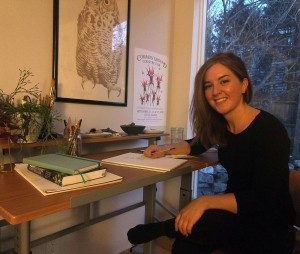
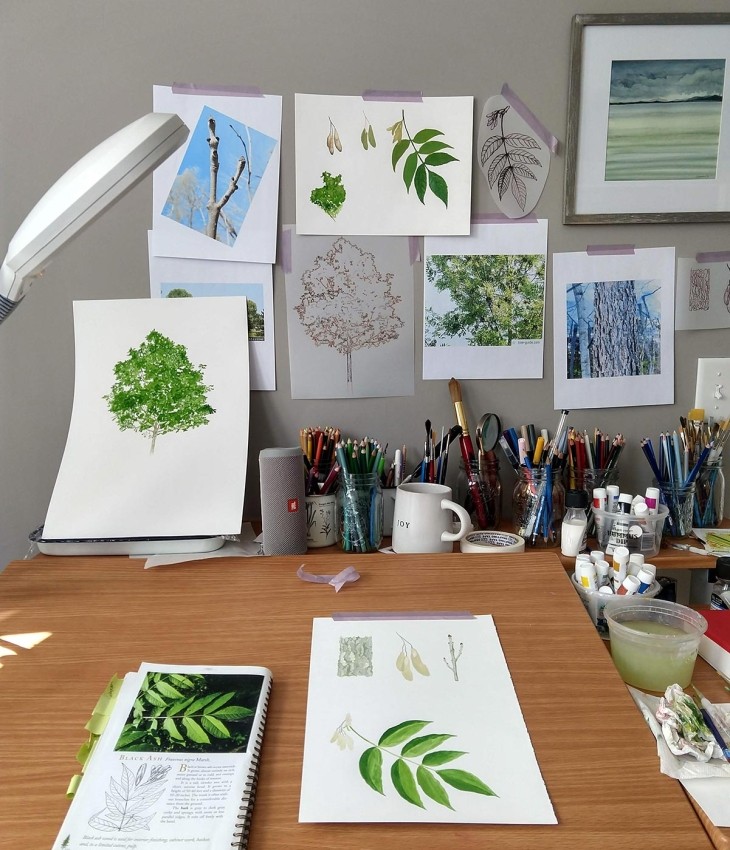
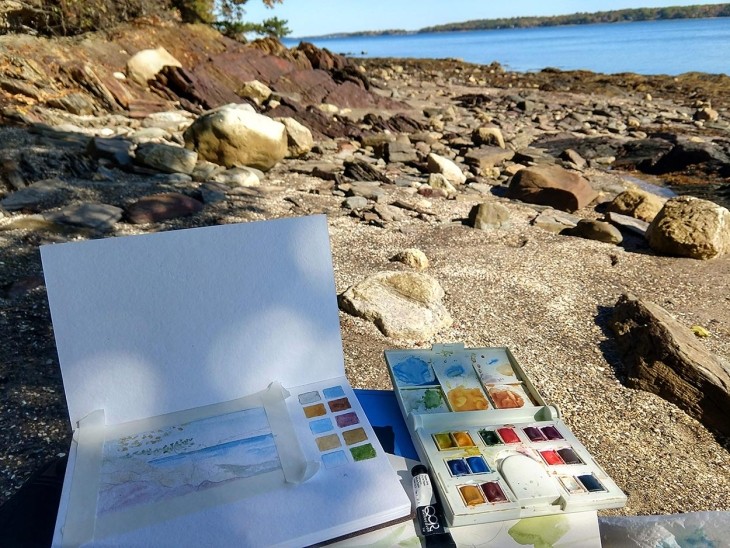
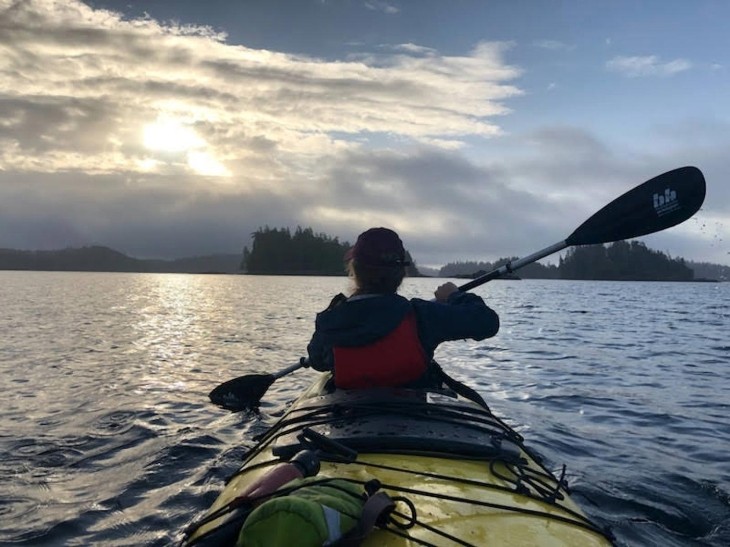

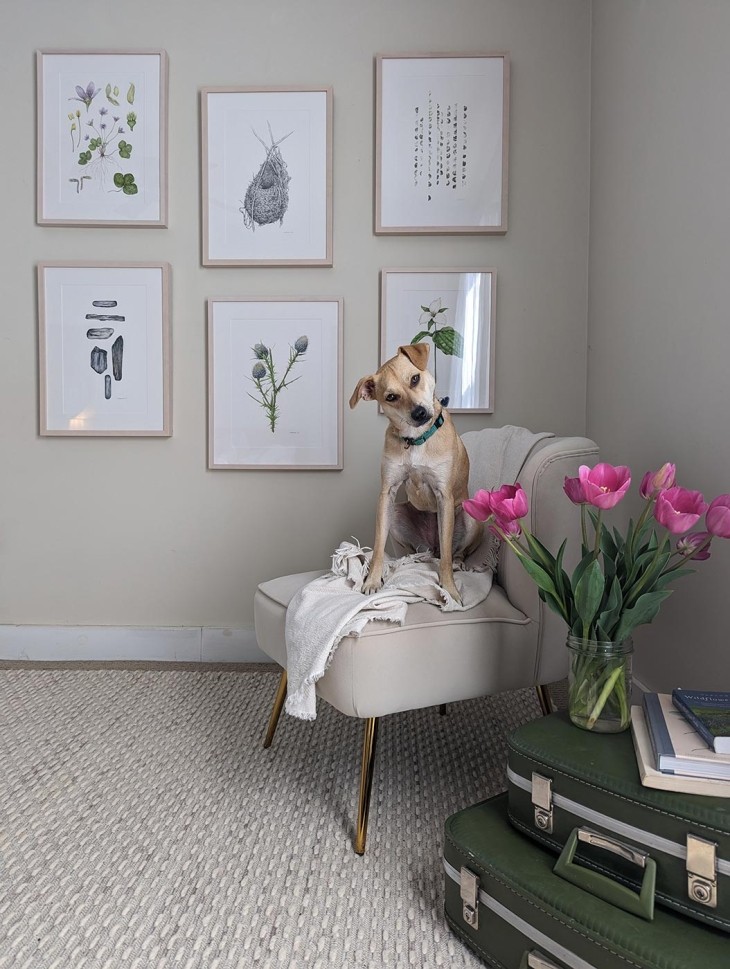
Discussion *